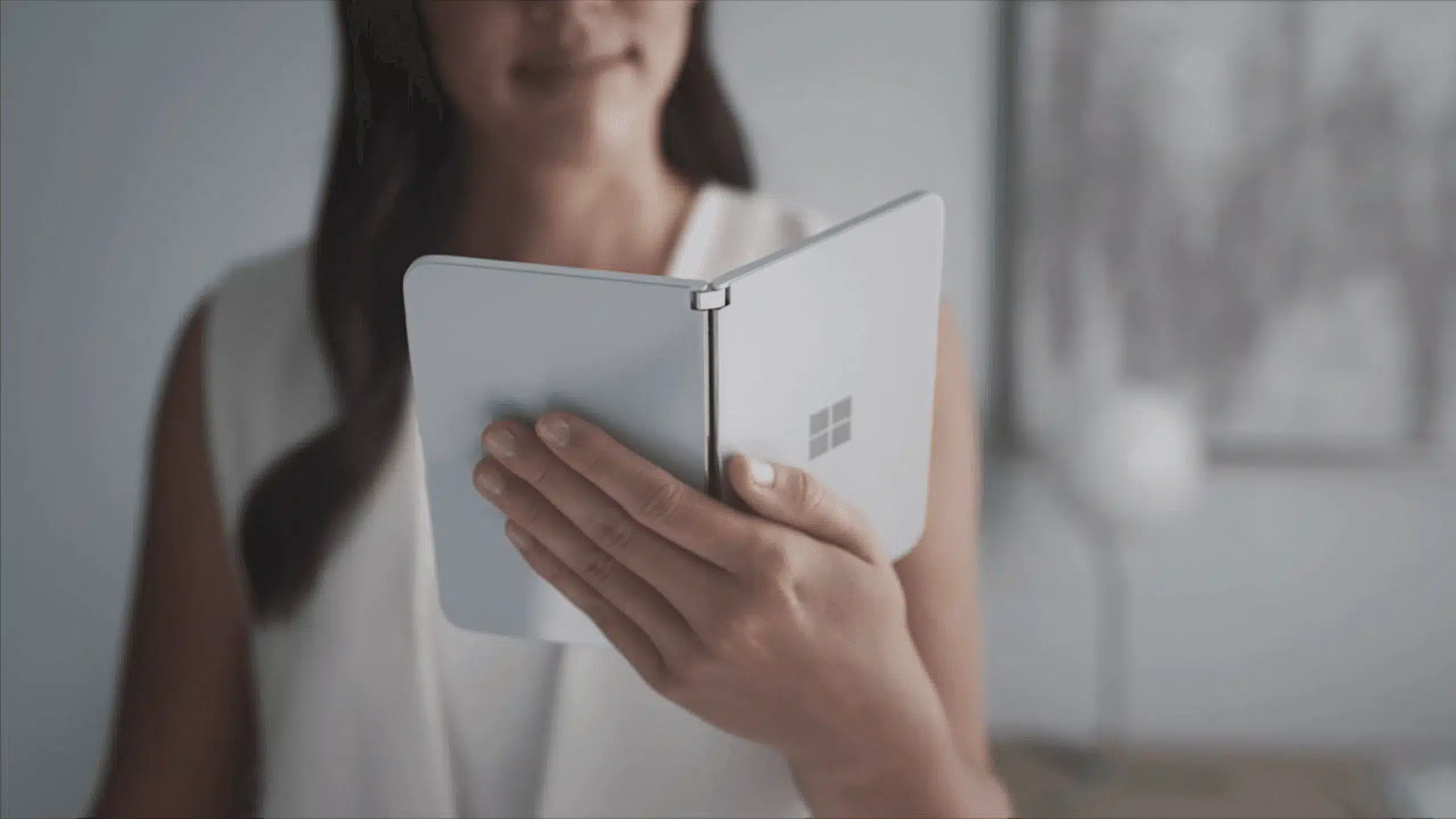Designing Engaging Apps for MS Surface Duo

Microsoft’s Surface Duo is a great Android app design and development challenge. As a compelling new device – or rather a device creating a new category – it’s got the screen real estate of a tablet, pocketability of a mobile device – and multitasking promise second to none.
There’s something about having two physical screens that tell your brain to function differently. We’re all used to having multiple windows open on our desktops and laptops. Many of us are used to various monitors side by side at our desk, especially now that we’re working from home. Yet, in the mobile world, we’re used to frantically swapping between apps. Tablets would have the screen real estate to run multiple screens side by side, but it’s not what we are used to doing.
The two physically separated screens of the Surface Duo are a clear signal for the user to expect each screen to have a separate function for a common purpose.
Getting the Android app user experience right
App development, in general, has become less about the technical challenge and more about compelling experience design. At the same time, customers’ expectations have risen. In the past, the mantra was ‘free or fantastic.’ Nowadays, everything needs to be fantastic, or you don’t have to chance to monetize on it.
Building apps for Surface Duo comes with unique technical requirements. Duo isn’t running on standard Android, but an enhanced Android OS. Traditional Android apps do run on Duo, but there’s twice the opportunity for new experiences across the dual displays. Your app won’t leverage the unique dual-screen opportunities unless you build it to do so.
Traditional app development has to adapt the screen to portrait and landscape mode. With Duo, there are six different postures to consider. You can run an app on the left side of the screen, the right side of the screen, and horizontally on both. Similarly, on the upper screen, the lower one, or vertically on both. You could also place the device on a table in an A-shape so that you and someone else both see one side of the screen.
Don’t just scale the view; share more information
When you have two screens, you don’t merely want to scale the view in most cases. At least you can present more information. You may also want to split the functionality so that the upper side shows content while the lower side acts as a keypad, for example.
The even more significant benefit with dual screens is presenting two applications or two views of one app side by side. Comparing data, copy-pasting fields, seeing your calendar while messaging, checking your email while in a video conference – the opportunities feel unlimited.
Five steps to successful Android apps
In the end, success doesn’t rely on the technical capabilities or your app development skills. The true starting point for great app experiences has to be the app user. How do you add value to their life? What kind of an IT solution is relevant to them? What are the steps in their daily journey that are desk-bound, but which you could mobilize? What are the current mobile processes that require flicking back and forth in or between apps, that you can make more convenient?
Besides convenience, can you help reduce mistakes, improve uptime, save lives, or avoid litigation?
We offer app developers five steps to success:
- Set targets and success criteria. Plan how you gather data, turn it to insights, always measure whether you’re on track, and pivot when necessary.
- Identify how to improve your customer’s journey. Unless you intimately understand your customer, we recommend research and interviews, creating a user persona, and mapping the journey of the persona.
- Understand the current IT, Surface Duo capabilities, and where there’s potential to improve.
- Carefully evaluate what’s the right balance between new improvements and keeping things familiar.
- Design a solution (not just an app) and design it so that the team can turn it into SW development. Develop the app. Track project milestones and code. Don’t forget to test the expected customer experience throughout the process continuously. Customer Experience is a journey, not a milestone.
Don’t forget to watch the recording of the DESIGN. CODE. LAUNCH. event!
Microsoft’s Surface Duo is a great Android app design and development challenge. As a compelling new device – or rather a device creating a new category – it’s got the screen real estate of a tablet, pocketability of a mobile device – and multitasking promise second to none.
